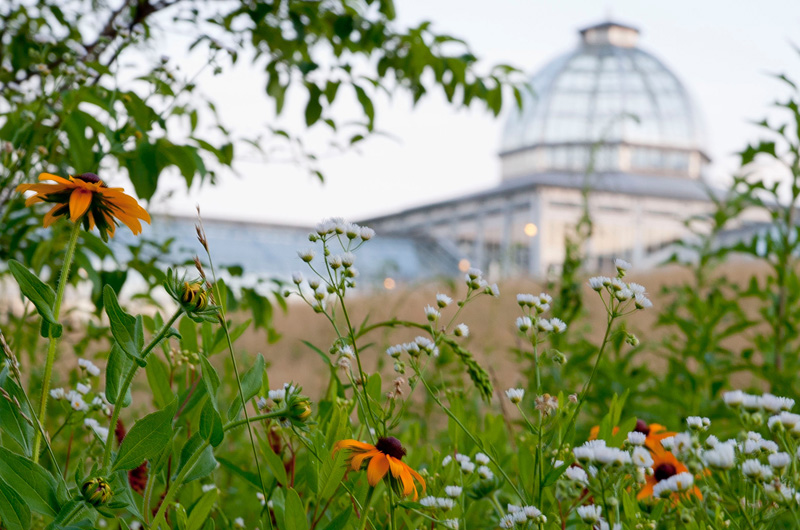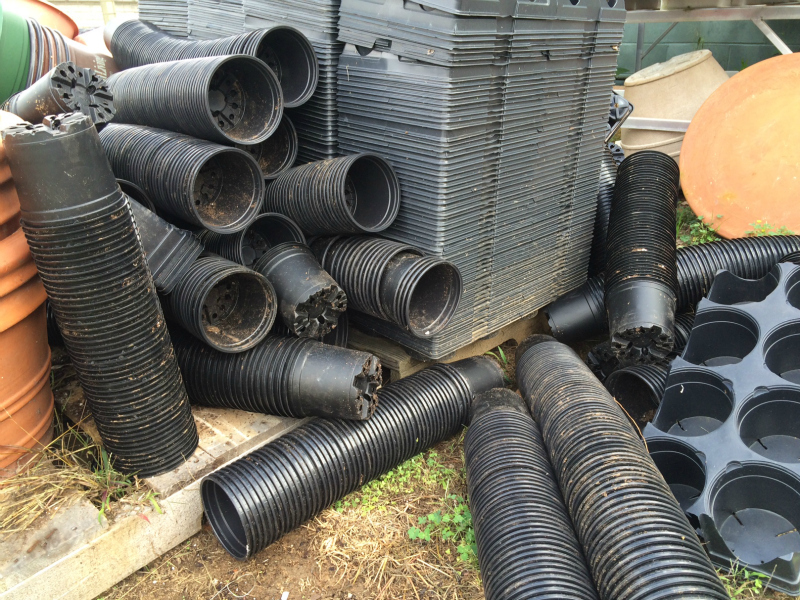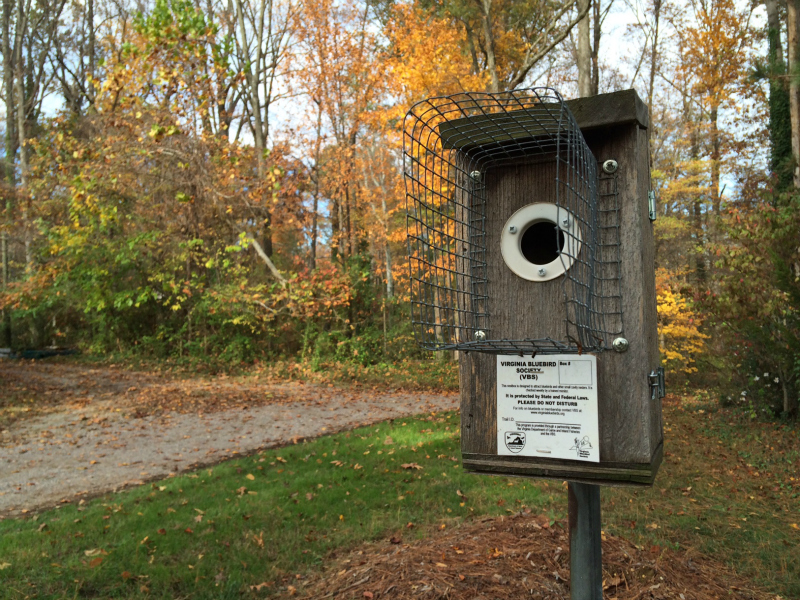The Top 10 Ways We Practice Sustainability
Unless someone like you cares a whole awful lot, nothing is going to get better. It’s not.
~”The Lorax” by Dr. Seuss
Remember the Lorax? He’s the Dr. Seuss character who warned against letting our own greed lead us into exploiting the natural world. “Now is the time,” he urged, while “the grass is still green and the pond is still wet and the clouds are still clean,” to be conscientious conservationists. Before its too late. And while there are no Bar-ba-loots, Swomee Swans, Humming Fish or Truffula Trees to defend at Lewis Ginter Botanical Garden, there are plenty of other creatures here, and we recognize our duty to be responsible stewards of the natural gifts we have been entrusted with.
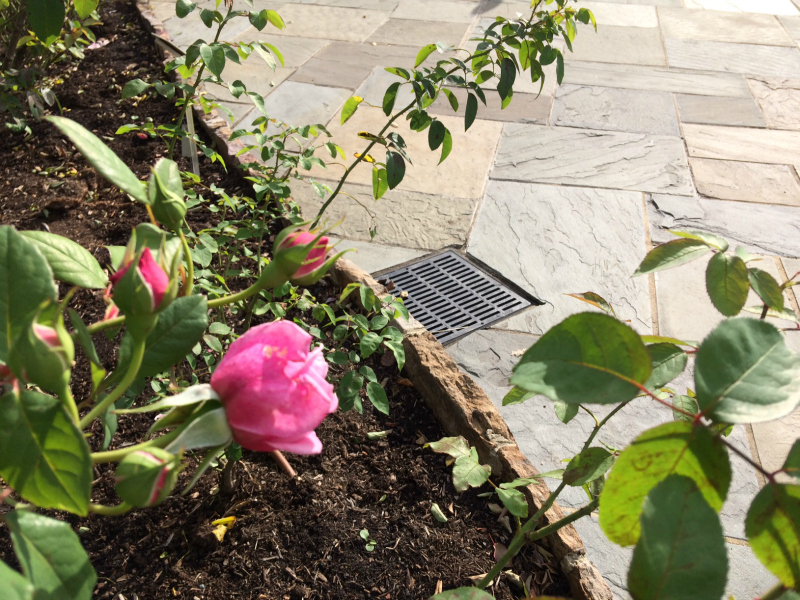
A storm drain at the bottom of the Cochrane Rose Garden, one of the many spots we collect water for our irrigation lake.
Here are the Top 10 ways we practice sustainability at Lewis Ginter Botanical Garden:
1. Conserving Water: a perfect storm.
We capture two million gallons of storm water annually — runoff from roofs, paths and other hard surfaces throughout the Garden. Then we filter it and funnel it into Lake Sydnor and a secondary conservation lake to be used for irrigation. Nearly all our irrigation water comes from recycled water — we have purchased water for irrigation in only one of the past three years. More water management strategies include early morning irrigation to minimize evaporation and utilizing drip irrigation and mulch, which help retain water in the soil.
2. Planting Native Species: there’s no place like home.
The 9,200 square feet of ornamental grasses planted in front of the Conservatory, as well as other native species growing throughout the Garden, have adapted to regional rainfall (requiring less irrigation), have adapted to the hazards of local pests and diseases (requiring fewer pesticides) and have adapted to the characteristics of local soil (requiring less fertilizer). Just like Goldilocks, they think everything here is just right!
3. Recycling: when will I see you again?
Ten thousand plastic garden pots from this year’s fall/winter bedding change-out at the Garden will get a new lease on life thanks in part to Four Seasons Recycling who will recycle 7,000 of them. We will sterilize 3,000 others and re-use them to pot next year’s plant sale inventory. Wooden walkways in the West Island Garden have been replaced with eco-friendly Trex made from 50 percent recycled plastic and 50 percent recycled wood. Even the shingles on the CWDKids Tree House are made of recycled rubber. Eat or drink refreshments served by Meriwether Godsey (the Garden’s caterer) next time you visit and you will be using fully compostable hot cups, napkins made of 100 percent recycled fiber and food containers manufactured from a corn-based product.
4. Using LED lights: less is more.
Almost 95 percent of the 30 miles of twinkling strands that will make Dominion GardenFest of Lights come alive this year have been converted to LED. That’s 520,000 little bulbs on 7,300 strands helping to a big difference in energy consumption at the Garden.
5. Creating and preserving wildlife habitat: nurturing nature.
Monarch Watch has recognized the Garden as an official Monarch Waystation, where migrating monarch butterflies can find milkweed to help nourish adults and host their larvae. Nesting bluebirds get help competing for scarce woodland habitat from volunteers at the Garden who maintain 14 bluebird boxes along the Garden’s Bird Trail. And plants throughout the Garden are selected with an eye to attracting and supporting native pollinators.
6. Applying natural fertilizer: what goes around comes around.
Beginning in 2012, Bermuda grass (turf) throughout the Garden was top-dressed with organic compost, adding extra nutrients to the soil and, over time, reducing the need for synthetic fertilizers. The compost? It was acquired with compost credits generously donated to the Garden by WestRock, which they earned by diverting food scraps from their cafeteria.
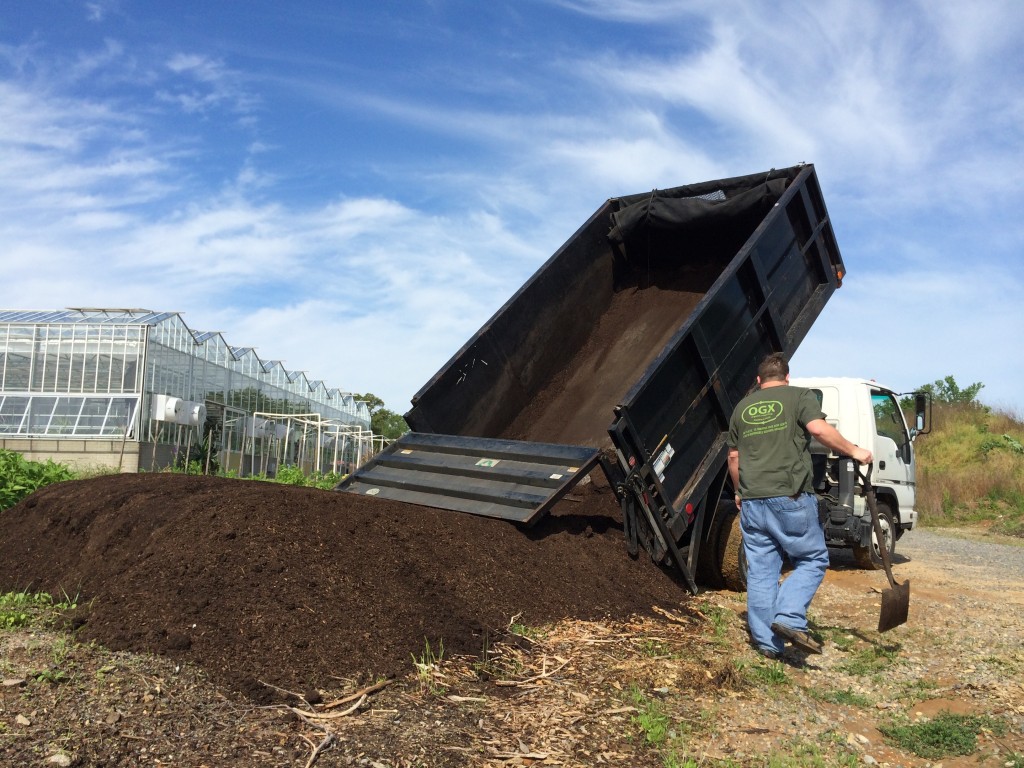
Compost arrives at the Community Kitchen Garden where it will fertilize vegetables to feed hungry children and seniors.
7. Employing natural predators: fight fire with fire.
The Garden follows an Integrated Pest Management policy that limits pesticide use to the least toxic effective products available. Imagine the ecosystem of the Conservatory: the perfect environment for imported, unwanted insect pests. It is also the ideal situation for us to fight back with biological controls. Our first line of defense is simple housekeeping or hand removal. But natural predators (most bugs have their nemesis) are our secret weapon!
8. Using mechanical controls: friends with benefits.
Planting vegetables in the Community Kitchen Garden alongside the herbs and scented perennials that appeal to predator insects is an easy solution to the problem of pests. We have also used a team of hungry goats to devour overgrown brush and invasive poison ivy in undeveloped areas of the Garden. They provide harmless but effective weed control as well as fertilizer. Poison ivy — yum!
9. Filtering water: cleaning up our act.
Look closely in the water the next time you cross the Lotus Bridge over Sydnor Lake. The tiny island on the southeast side is not an island at all! It is a pad of shredded plastic drink bottles that have been repurposed with the help of the Chesapeake Bay Foundation, called the Floating Island Garden. The roots of the water-loving plants that grow there thread into the lake below and act as a filter to help control excess nutrients and pollutants. Nearby you’ll find the West Island Garden wetland area, which helps to clean pollutants from runoff, and cypress trees, which we believe help scrub the water where they live.

Plants on the Floating Island Garden are full grown now, but when it was first launched it looked like this. The bamboo fencing keeps our resident turtles from feeding on the plants.
10. Not mowing: make something out of nothing.
At last, a solid argument against cutting the grass! By leaving undeveloped grassland in the Anderson Meadow, we create habitat for birds, butterflies and other insects who in turn work to minimize populations of damaging insects. The thirsty plants slow run-off, allowing rainwater to soak into the ground and recharge local water tables. And an unmown meadow has no need for fertilizers and weed killers, which means less nutrient and pesticide waste to pollute streams and rivers. We do cut the meadow once each year, in the late winter, to suppress the growth of woody plants.
Now its your turn to heed the advice of the Lorax. Show us that you care “a whole awful lot.” Go back through our list and consider which ideas you can use in your own garden. Because we think that inspiring “someone like you” to help care for the world that belongs to us all is just as important as practicing it ourselves.
Special thanks to volunteer Susie Austin, the Lewis Ginter Botanical Garden Sustainability and Conservation Garden Guide.
To learn about protecting the forests and endangered species of our planted, visit The Lorax Project, an initiative founded by Dr. Seuss Enterprises and Random House to raise awareness of environmental issues and inspire earth-friendly action around the world.
